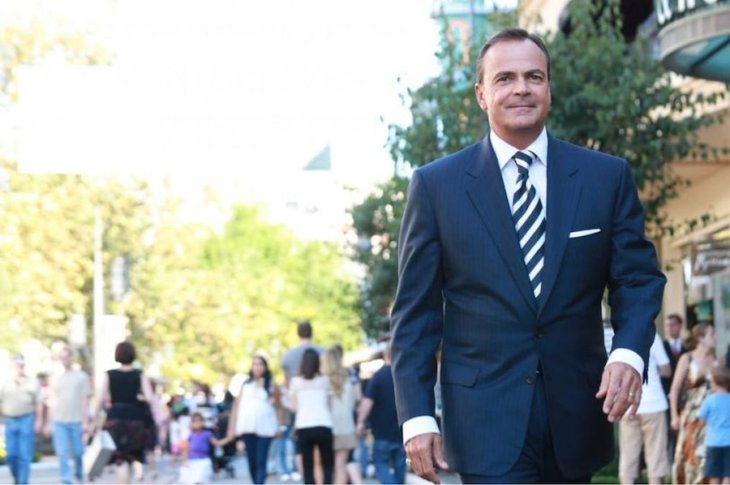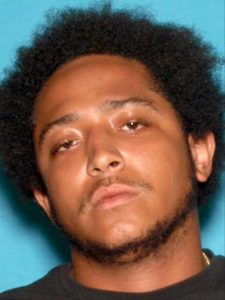By Mark Ryavec
Last month I received several questions and complaints about

Councilman Bonin’s recent “Ending Homelessness in Venice” survey. Many residents felt the survey questions were slanted and pushed respondents in one direction or another.
Residents wrote me that they felt they could either appear cruel and uncaring in their answers or they had to choose options that in their opinion would simply make it easier for transients to be homeless on the streets of Venice, such as providing more storage facilities for their belongings.
Actually, the survey is more insidious than my neighbors’ initial take on it.
First off, Mike Bonin, a Harvard graduate, knows that proper survey research carefully chooses a random sample of the electorate so that the results closely align with the opinions of the whole community. In no instance can the pollster, in this case Bonin, speak with any degree of accuracy about the opinions of all Venetians if the respondents self-select to participate. So, on its face the survey is bogus.
Next, survey researchers warn against asking residents complicated questions that go well beyond the respondents’ knowledge. Otherwise, this will lead to error; i.e., the survey will not objectively reflect the views of the community. Bonin attempts to get around this pitfall by lengthy introductory paragraphs about the subject areas. This is where the propaganda starts.
For example, the survey includes this statement: Throughout Los Angeles, and like many other coastal communities, the City had a law prohibiting camping or living in vehicles. Last year, it was thrown out by the courts, which said it criminalized homelessness. (Emphasis added)
In the Desertrain decision, the court held the City’s ban on lodging in a vehicle (LAMC 85.02) was unconstitutionally vague, not that it criminalized homelessness. That’s just homeless advocate jargon. City Attorney Mike Feuer has already drafted a tighter version of the car-camping ban that he feels will pass constitutional muster. The new ordinance has been languishing in a City Council committee for over six months.
One has to ask why Bonin didn’t use the survey as an opportunity to ask residents if they want the new ordinance adopted so the LAPD can remove all the people camping in vans and cars on our curbs. Is it possible that he didn’t ask because he was worried that residents would support the new ordinance?
Bonin’s survey then goes on to reintroduce a rejected car camping model from Santa Barbara, which was introduced by his predecessor, Bill Rosendahl. Bill illegally set up a car camping area in the parking lot behind Westchester City Hall and tried to open up the parking lot at the Penmar Golf Course as an overnight RV campsite. The car camping area behind Rosendahl’s offices attracted car campers and homeless persons without cars and became an eyesore and crime generator. The LAPD and social service providers had to be called in to address complaints of the Westchester community. In Penmar, the residents, golf course employees and golfers rose up and forced Rosendahl to withdraw his proposal.
Bonin’s homeless advocate allies in Venice have always lamented that Santa Barbara’s car camping model was not adopted in Venice (and elsewhere in Los Angeles) and so Bonin is trying to bring it back from the dead, trolling for support for the concept in his recent survey.
The Venice Neighborhood Council’s Ad-Hoc Committee on Vehicular Occupation, which I co-chaired, examined the Santa Barbara program. We noted that Santa Barbara is much less dense in its population patterns than Venice so that their car camping sites can be setback at greater distance from residences than is possible in Venice. We then proposed a few sites in the 11th District that would have significant set-backs from residences. We also recommended the passage of a Conditional Use Permit process to allow neighbors to set conditions of operation on any car camping sites; e.g., hours of operation, limit on the number of vehicles, response time of the non-profit operators to address noise, fights, drug sales, etc. Earlier this year I wrote to Bonin asking if his current iteration of a safe parking program would include a 1,000 foot setback from residences so we did not see Kampgrounds of America on church lots in Venice – right next to residences – or on the County’s Rose Avenue parking lot, right across from residences. Bonin never replied.
For those who question if the City can find such remote sites, I would direct them to LAX and the deserted Manchester Square area, which was bought up by LAX in lieu of sound-proofing all the apartments there. Both areas offer the adequate setbacks from residences that we believe would be appropriate for a pilot vehicle camping program.
While on this subject, it’s important to note that at the time of Rosendahl’s push for “Safe Parking” lots for vehicle campers the executive director of People Assisting the Homeless (PATH), Joel Roberts, declined Rosendahl’s request to manage them, stating that he would rather have his staff just counsel RV dwellers in situ on the street and not have the liability for policing any actual RV campgrounds. If Mr. Roberts thinks these car camping sites will be problematic, the City should be cautious about their design and standards of operation.
In addition to misstating the underlying law and facts in the survey’s introductory texts, Bonin’s survey does not offer residents certain solutions that have been on the table for a good while. The most obvious is our proposal to return to enforcement of the City’s “no lying, sitting or sleeping on a sidewalk” ordinance (LAMC 41.18). While Bonin has come around to our position that the Jones settlement was a self-inflicted wound that harmed residents and transients alike by allowing the proliferation of encampments across the entire City, he fails to offer to residents the solution the VSA has championed. The Jones settlement and its limit on enforcing LAMC 41.18 between the hours of 9 pm and 6 am will evaporate as soon as the City Attorney returns to court with the list of 1,250 permanent supportive housing units which have been built over the last eight years to satisfy the settlement. The City could – and should – create teams of homeless outreach staff with trained LAPD officers to respond to persistent encampments which have destroyed the quality of life of nearby residents (e.g., Third Street and the Boardwalk). Once 41.18 can be enforced overnight these teams would be empowered to offer campers four options:
- immediate transportation to shelter or transitional housing beds (anywhere in Los Angeles; housing does not have to be politically correct)
- bus fares to welcoming family members out of state
- leave the encampment for any area not near residences
- or receive a citation under LAMC 41.18.
I do not see this enforcement practice being routinely used to flush campers from under freeway overpasses or other locations not near residences. The object would be to decrease the crimes that result as much from the proximity of encampments to residences as from any other factor, crimes such as trespass, late night noise, harassment, home invasion, vandalism, defecation and urination on private and public property, etc.
The other element of deceit in Bonin’s survey can be seen in the section calling for more affordable housing for the homeless. The survey poses the following problem: Due to the cost of real estate in Venice, building affordable or permanent supportive housing is very difficult, and financing is hard for non-profit and even for-profit affordable housing developers to come by.
In choice #2 Bonin offers this simplistic solution to Venice’s high land costs:
The City should allow service agencies to build housing for homeless and low income people on City-owned land in Venice, for example, allow service agencies to build housing on City-owned parking lots as long as existing parking is not eliminated or reduced.
Just like in the Penmar Golf course example, this is a recycled – and rejected – proposal from Bonin’s other former employer. Many years ago residents beat back the proposal made by Councilwoman Ruth Galanter (acting at the request of Steve Clare, the executive director of the Venice Community Housing Corporation) to give the air rights over the City’s Electric Avenue parking lots to the VCHC for low income housing. The lots in the median of Venice Boulevard have also been mentioned for this purpose over the years, and in more recent times Mr. Clare had his eye on the city lot across from the Rose Cafe and the binocular building. (Rosendahl told me some years ago that Clare asked him for that lot for free but Rosendahl said he turned him down.)
The survey fails to give residents the history of such projects in Los Angeles. The first instance of such a development was when senior-housing developer Tom Safran gained the air rights over a city parking lot for zero dollars in the 5th Council District when Zev Yaroslavsky was councilman. In that case the public parking remained intact at the ground level and the new apartments above were limited to seniors who could not afford cars or were beyond their driving years.
However, the model Bonin is proposing is for any homeless or low income people. Mr. Clare has maintained in the past that the low income people who would inhabit these projects would not have cars and thus he should not have to include any parking in the project for those residents. This is a fallacy.
A few years ago I managed a non-profit affordable housing corporation in the Valley which had about the same number of units as the VCHC – about 160. One of the realities of these affordable housing projects is that as individuals get stabilized, receive job training, go through rehab (if needed), they also get jobs that require cars, their incomes increase which allows for a second car for their spouse, they have children and then the children grow up, and the children purchase cars. The result over time is that the number of cars proliferate so there is always a shortage of parking, especially at night. This would happen at any affordable project built over a city parking lot in Venice unless it is limited to seniors. Otherwise the tenants will eventually occupy the current public parking on the ground floor lot and then their cars would spill onto adjacent streets.
Mr. Clare replied to this critique in the past by stating that the City can mandate that people initially moving into the project not have a car but in the same breath he admitted that the City could not enforce a ban on later purchase of a car by a tenant or their children, which is my point exactly.
The underlying issue to consider is that affordable housing can be built anywhere in the City of Los Angeles at much less cost than in Venice, while all those city parking lots are sorely needed for uses other than housing here in Venice. Venice Boulevard should return to having a trolley line along its median and, frankly, tracks should run all the way to a terminus on the city parking lot at Pacific. With an Expo station already located in Culver City on Venice Boulevard, a train line to Venice and the beach would be economical to build and would relieve a tremendous amount of our traffic and parking deficiencies. The lots along Electric should have been developed with automated multistory parking facilities, as was proposed by Don Novack of Hal’s restaurant. (An affordable senior project over the triangular lot at Pacific and Rose does make sense, so maybe Tom Safran can be invited back to Venice to make an assessment of whether the lot is large enough to make such a project feasible.)
So, Venetians, beware of councilmembers asking for your opinion. What you probably will get instead is their opinion, packaged to look like your opinion.
_______
Mark Ryavec is president of the Venice Stakeholders Association. He holds a BA in Psychology from UCLA and an MA in Urban Studies from Occidental College/CORO Foundation.


























